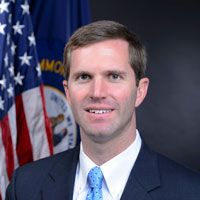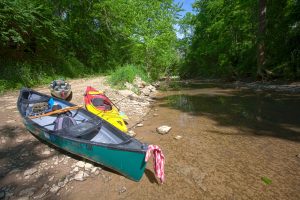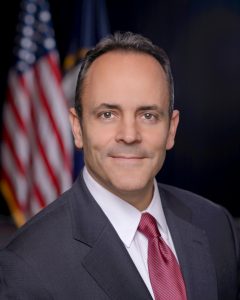
Photo: KY Education and Workforce Development
Unemployment rates dropped in 55 Kentucky counties between March 2016 and March 2017, rose in 53 and stayed the same in 12 counties, according to the Kentucky Office of Employment and Training, an agency of the Kentucky Education and Workforce Development Cabinet.
Woodford County recorded the lowest jobless rate in the Commonwealth at 3.5 percent. It was followed by Oldham and Shelby counties, 3.7 percent each; Fayette County, 3.9 percent; Scott County, 4 percent; Spencer and Warren counties, 4.1 percent each; Jessamine County, 4.2 percent; and Allen, Boone, Campbell and Henry counties, 4.3 percent each.
Magoffin County recorded the state’s highest unemployment rate at 18.9 percent. It was followed by Elliott County, 11.6 percent; Leslie County, 11.5 percent; Knott and Harlan counties, 11 percent each; Letcher County, 10.9 percent; Menifee County, 10.7 percent; Carter County, 10.6 percent; Breathitt County, 10.4 percent; and Lawrence, Lewis and Wolfe counties, 10.3 percent each.
In contrast to the monthly national and state data, unemployment statistics for counties are not seasonally adjusted. The comparable, unadjusted unemployment rate for the state was 5.4 percent for March 2017, and 4.6 percent for the nation.
Unemployment statistics are based on estimates and are compiled to measure trends rather than actually to count people working. Civilian labor force statistics include non-military workers and unemployed Kentuckians who are actively seeking work. They do not include unemployed Kentuckians who have not looked for employment within the past four weeks. The statistics in this news release are not seasonally adjusted because of the small sample size for each county. The data should only be compared to the same month in previous years.
Learn more about Kentucky labor market information at www.kylmi.ky.gov.
 Attorney General Andy Beshear announced today that Kentucky received $93,415,537 million in tobacco settlement money this week.
Attorney General Andy Beshear announced today that Kentucky received $93,415,537 million in tobacco settlement money this week.
“For nearly 20 years the landmark Master Settlement Agreement has made a positive impact on the Commonwealth, supporting early childhood education, health programs, cancer research, and helping to aid our farmers and create sustainable farm-based businesses,” Beshear said. “Since the first payment in 1999, Kentucky has collected over $2 billion under the agreement, and is on pace to collect nearly $3 billion over the first 25 years of the agreement.”
On behalf of the state, Beshear’s office monitors and enforces the terms of the Master Settlement Agreement (MSA) and the related statutes, in cooperation with other agencies including the Department of Revenue and the Office of State Budget Director.
Each state determines how the MSA funds are distributed and spent.
In Kentucky, the General Assembly has designated half of the MSA funds be invested in agricultural diversification through grants issued by the Governor’s Office of Agriculture Policy, which administers the Kentucky Agriculture Development Fund.
Under the MSA, the tobacco companies agreed to make annual payments, in perpetuity, worth approximately $208 billion to states and territories that are signatories to the agreement.
Since 1998, tobacco companies have had to compensate states for some of the medical costs associated with tobacco-related illnesses and restrict advertising and promotion of cigarettes in the United States. The payments are determined according to a formula calculated, in part, by the number of cigarettes sold by companies that have agreed to join the settlement.
The three largest cigarette manufacturers – Philip Morris USA, RJ Reynolds and Lorillard (the latter two now merged as Reynolds American) – pay most of the MSA payment.
The Tobacco Settlement Agreement Fund Oversight Committee oversees the determinations on grant applications from the agricultural fund. Kentucky’s additional MSA revenues are used to help improve the health outcomes of Kentucky children and families.

Photo: NBPTS Website
Kentucky recently celebrated the 18 newly certified and 101 newly renewed National Board Certified Teachers (NBCTs) who continue to improve their teaching for the students of the Commonwealth. With 3,292 NBCTs, Kentucky ranks 6th in the nation for the percentage of teachers who are Board-certified (8%) and 9th in the nation for the total number of Board-certified teachers.
This small class of newly Board-certified teachers represents the last to be certified in the 2.0 version. The National Board for Professional Teaching Standards has just completed a transition to a more flexible and accommodating process that can be completed in one to three years while maintaining high and rigorous standards. Kentucky currently has nearly 1,000 teachers that are candidates in the new certification process, placing Kentucky fifth nationally for the total number of candidates, and as one of the top states in the nation in terms of percentage of teachers that are candidates.
Kentucky has consistently ranked in the top ten nationally for the number of Board-certified teachers. James Adams, Executive Director of the Education Professional Standards Board, described board certification as, “the highest credential in the teaching profession.” Adams added, “The progress that Kentucky continues to make towards the legislative goal of having at least one NBCT in every school is something to celebrate. This innovative goal is important for our students.”
At the February 23 event Hal Heiner, Secretary of the Kentucky Education and Workforce Development Cabinet presented the NBCTs with a proclamation from Governor Bevin proclaiming the day “National Board Certified Teacher Day” in the Commonwealth. “I’m pleased to be presenting this proclamation on behalf of Governor Bevin,” said Secretary Heiner. “These newly board certified teachers are among Kentucky’s most dedicated educators, providing the highest level of learning for the students of our Commonwealth – our future workforce. To achieve this certification, these teachers spent more than 400 hours preparing, planning and analyzing their practice. I applaud them for their steadfast dedication.”
“Achieving National Board Certification is not only a great personal achievement, it also shows our teachers’ strong commitment to their profession and to improving teaching and learning for all Kentucky’s students,” said Commissioner of Education Stephen Pruitt. “I am incredibly proud of our teachers and the work they do across this Commonwealth every day to ensure each one of our students is given an opportunity to reach high levels of achievement that will prepare them to face tomorrow’s challenges.” Commissioner Pruitt presented each NBCT with an official pin from the National Board at the event.
The Kentucky Department of Education, Kentucky Education Association, and the Education Professional Standards Board have worked collaboratively with the National Board for Professional Teaching Standards for three years as a site in the Network to Transform Teaching funded by the U.S. Department of Education Supporting Effective Educator Development (SEED) grant. “Towards the aspiration of supporting every student to learn from accomplished, Board-certified teachers, partners in the Network to Transform Teaching are developing and scaling innovative approaches that strengthen the career trajectory for every teacher,” said Joe Doctor, chief operating officer of the National Board, “Kentucky is a leader in that effort, as it capitalizes on the expertise of Board-certified teachers to lead this work and engages a broad cross-section of stakeholders to ensure coherence for teacher support.”
Three of the new NBCTs are the first in their schools or district. DeAnna Miller, Fulton Independent Supervisor of Instruction, says of the district’s first Board-certified teacher, “Jennifer Caldwell has been a leader for both students and teachers in our district for many years. She shows us what good instruction looks like on a daily basis and is the perfect mentor for other teachers to follow on this distinctive professional pathway.”
“The key to schools of excellence, raising achievement scores and creating a culture of high expectations that ensures future success for ALL kids is building leadership and teacher capacity,” said Henry Webb, Superintendent of Floyd County, who celebrated four new NBCTs at the event. “An accomplished teacher in every classroom in America should be our goal for our KIDS, and I am convinced that the National Board Teacher Certification program is an outstanding process to ensure we meet this goal!”
“Teachers are the power behind National Board Certification. The standards, assessments, and organization are run by teachers and for teachers,” said Holly Bloodworth, NBCT, President of the Kentucky NBCT Network. Bloodworth led the reciting of the Five Core Propositions, the foundation of Board-certification, considered the education profession’s Hippocratic Oath at the ceremony.
National Board Certification is voluntary and open to all teachers who have three years of classroom experience and a baccalaureate degree. National Board Certification is available in 25 certificate areas from preschool through twelfth grade.
Kentucky has strong statewide support for National Board Certification. NBCTs are entitled to an annual $2,000 salary bonus for the life of their certificate. Upon successful completion of Board certification, Kentucky teachers currently holding a Rank II certificate are eligible to apply for Rank I.

“In For The Cure” by Franklin County artist Fran Redmon
Work by 29 Kentucky artists will hang in Frankfort for the Governor’s Derby Exhibit, an annual initiative coordinated by the Kentucky Arts Council.
This exhibit is on display through May 8 in the Capitol Rotunda, 700 Capital Ave. in Frankfort.
“The Kentucky Derby is a time-honored tradition, and so, too, is our celebration of work by Kentucky artists,” said Kentucky First Lady Glenna Bevin. “The Governor’s Derby Exhibit is something we want all Kentuckians and visitors to our wonderful state to come to Frankfort and enjoy as we count down the days until the first Saturday in May.”
The exhibit celebrates Kentucky stories and traditions, including its tobacco heritage, which Frankfort artist Fran Redmon chose to capture in her pastel work titled “In For the Cure,” which shows a colorful rendition of a barn with drying tobacco hanging inside.
“I grew up in Woodford County as the daughter of a tobacco farmer with my five siblings,” Redmon said. “We worked on the farm every year. It was something we were all part of. When I drive down the road in the fall and see tobacco hanging, I remember those days.”
The barn in her piece is one she saw on a fall drive in Franklin County near Switzer.
“I took a picture of it and decided to do a painting,” she said. “I liked the way it was weathered, but the thing that caught my eye was the dramatic lighting of the sun coming across the front. I liked the drama of the light and shadow at that time of day.”
This is the second time Redmon’s work has been selected for the Governor’s Derby Exhibit.
Unlike most Kentucky Arts Council exhibits, which are only open to adjudicated arts council program participants, the Governor’s Derby Exhibit includes art from any Kentuckian age 18 or older.
“One of my goals as executive director is creating more opportunities for Kentucky artists across the state to show work in arts council exhibits,” said Lydia Bailey Brown, arts council executive director. “These exhibits often help us discover even more talent in the state, and gives those artists the confidence to put themselves out there.”
Below is a full list of artists included in the display, their county of residence and title of artwork:
- Bill Berryman, Clark, “The Piper”
- Bill Burton, Daviess, “Keeneland Fall Meet”
- CeCe Butcher, Pulaski, “Tribute to Bill Monroe”
- Robert Clark, Scott, “Mine That Bird’s Derby”
- Laura Eklund, Carter, “Kentucky Sky”
- Darryl Halbrooks, Madison, “Natura Morta 5”
- Jerielle Hanlon, Fayette, “Kentucky Agate and Cloud Abstract”
- Marilyn Holmes, Jefferson, “I Too Sing America”
- Frederica Diane Huff, Jefferson, “A Kentucky Girl and Her Horse”
- Robert Hunt, Madison, “Kentucky Derby Story”
- Shirley Jeter, Fayette, “Tradition”
- Betty Liles, Christian, “The Apple Barn”
- David Neace, Jessamine, “Earth 1946”
- Kevin Osbourn, Clark, “The Rock Bridge”
- Ken Page, Kenton, “The Maestro Takes a Walk”
- Linda Pierce, Christian, “Troop Train”
- Monica Pipia, Fayette, “The Turnaround”
- Fran Redmon, Franklin, “In For the Cure”
- Cassandra Russell Dossett, Jefferson, “My Old Kentucky Saddler”
- Marcheta Sparrow, Franklin, “Intensity – Expression of a Kentucky Champion”
- Wayne Stacy, Franklin, “Faith Abandoned”
- Paula Stone-Buckner, Montgomery, “The Queen’s Court”
- Jason Sturgill, Fayette, “Face Shielded from the Sun Floating Slowly Down the River”
- Billy Tackett, Boone, “Pearl Bryan”
- Susan Tolliver, Jefferson, “Surging Ahead”
- Patty Trujillo, Jefferson, “Uncle Damon”
- Connie Vice, Oldham, “Worthington’s Garage”
- Amy Welborn, Oldham, “Mimosa Sunrise”
- Angela Wells, Jefferson, “Abe’s Last Garden”
The Governor’s Derby Exhibit is open to the public during regular State Capitol building hours from 8 a.m. to 4:30 p.m. Monday through Friday; and 10 a.m. to 2 p.m. Saturday.

Photo: Kentucky Department Fish and Wildlife
The weather forecast calls for a redbud winter to hit this week. This old saying refers to cold snaps that occur in early April when the redbud trees bloom.
The up and down nature of spring weather can cause consternation among anglers when planning fishing trips. Concerns about the weather is one of three things to consider when planning fishing trips this spring.
1. Barometric pressure is key to unlocking fish behavior in spring:
Barometric pressure is the measurement of the weight of an entire column of air pressing down upon the Earth. Approaching storm fronts in spring ease this weight, resulting in low barometric pressure. The low pressure releases humidity trapped in the atmosphere, resulting in rain or snow.
The dark, low clouds, winds and precipitation that accompany low pressure systems limit light penetration into the water column, providing a better environment for predator fish to ambush prey. Fish do bite better before a front.
High pressure systems follow low pressure frontal systems. In North America, high pressure systems flow out in a clockwise pattern, resulting first in winds from the north and eventually from the east.
“I don’t believe in too many old wives tales when it comes to fishing, but ‘wind from the east, fish bite least’ is one I do believe in,” said Maj. Shane Carrier, assistant director of Law Enforcement for the Kentucky Department of Fish and Wildlife Resources. “I don’t catch many fish when the wind is from the east.”
A couple of days of stable weather in spring ease the influence of high pressure and get fish biting again. The sunny days typical of high pressure warm the water and stir fish activity.
Plan your trips this spring to fish either right before a low pressure system or on the third or fourth day of stable weather.
2. Making sense of the USGS streamflow charts to plan float trips on Kentucky streams:
The streamflow information on the U.S. Geological Survey (USGS) webpage at www.waterdata.usgs.gov provides invaluable information for paddlers and anglers. On this page, select Kentucky from the drop down menu on the top right hand corner to view the flow on streams on all of the river drainages in Kentucky.
The rate of flow on this page shows as CFS or cubic feet per second. The cubic feet per second expresses the amount of flow that passes the USGS stream gauges per second. The higher the CFS, the higher and swifter the water.
The chart for an individual stream shows the discharge for each day of the preceding week as well as the current day. A small triangle on the chart shows the median, or midpoint, flow for each day based on years of data. A flow measuring much higher than the median means high, and usually muddy, water, not the best conditions for fishing and floating.
A flow under the median usually means tolerable fishing and paddling conditions. The USGS streamflow page also has a chart showing the gauge height for each stream. This helps flesh out the data provided by the streamflow chart. This chart provides a good mental image of the rise, fall or stability of the stream over the last week.
The new Canoeing and Kayaking page on the Kentucky Fish and Wildlife website at www.fw.ky.gov is another invaluable repository of information for stream anglers and paddlers. This page leads to information collected by biologists concerning the fish populations in a stream, the recommended levels for floating selected streams, photos of access sites and fishing tips. The page also contains a link to the Blue Water Trails series, an ongoing initiative detailing the paddling and fishing on streams across Kentucky as well as a printable map.
3. What is a daily creel limit and a possession limit for fishing?
Anglers often get confused about these terms, especially when they are fishing three or more to a boat.
“Whenever anyone is fishing in Kentucky, each angler is entitled to the daily creel limit for that species on that lake, river or stream,” Carrier explained. “There is no boat limit in Kentucky.”
For example, if three anglers fish for crappie on Kentucky Lake out of one boat, each is entitled to 20 crappie, the daily creel limit for crappie on Kentucky Lake and Lake Barkley. There is also a 10-inch minimum size limit for crappie on these lakes, therefore anglers must immediately release any crappie caught less than 10 inches long.
The possession limit is the amount of unprocessed fish a person may hold after two or more days of fishing. In Kentucky, this amount is two times the daily creel limit for any species that has a daily creel limit.
Keep these things in mind as you plan and execute fishing trips this spring. Remember to buy your 2017-2018 fishing license, as the new license year began March 1.
 Gov. Matt Bevin, as part of his Red Tape Reduction initiative, has signed documents to eliminate more than 65 obsolete, inactive and superseded boards and commissions.
Gov. Matt Bevin, as part of his Red Tape Reduction initiative, has signed documents to eliminate more than 65 obsolete, inactive and superseded boards and commissions.
A 2012 Legislative Research Commission (LRC) study identified 571 boards, commissions and similar entities such as authorities, councils and committees in Kentucky—a figure “nearly twice the number of the typical state.”
Gov. Bevin issued an executive order on March 23 eliminating 29 boards and commissions that were originally established by gubernatorial executive order.
“This Administration desires and will implement more effective and efficient management of state government operations and resources,” wrote Gov. Bevin in the order. “The dissolution of boards and commissions that are no longer active or necessary will aid in securing this greater efficiency and effectiveness.”
House Bill 276 (signed into law on March 21) eliminates 28 boards and commissions that were originally created by legislative action, and Senate Bill 249 (signed into law on March 27) eliminates 11 additional boards, commissions and task forces.
Among the boards and commissions abolished were entities such as the Kentucky Adoption 2002 Strategic Planning Task Force, the Capitol Centennial Commission and the War of 1812 Bicentennial Commission, which completed their work in 2002, 2010 and 2015 respectively.
These actions, along with sunset provisions and board consolidations, reduce the number of active boards on the books to under 400. No board members, funds or services to taxpayers will be impacted.
 For the second time in as many months, Attorney General Andy Beshear is releasing information to the public on the work of his office after a request for information by Gov. Matt Bevin.
For the second time in as many months, Attorney General Andy Beshear is releasing information to the public on the work of his office after a request for information by Gov. Matt Bevin.
Beshear is releasing information on his Office of Civil and Environmental Law’s Administrative Hearings Branch after a March 10 letter by the governor.
Last month, Bevin requested information on the AG’s Office of Civil and Environmental Law’s Open Records/Open Meetings Branch and information on the office’s civil attorneys and caseload.
Beshear released that information to the public Feb. 10.
“As I have repeatedly said, each time the governor requests information it gives me the chance to honor the hard work of the employees in my office,” Beshear said. “While many Kentuckians are unfamiliar with this branch in the Attorney General’s office, it plays a vital role to ensure government is operating properly and within the guidelines of the law.”
Hearing officers serve as impartial adjudicators of administrative matters in government. Lawmakers established the branch in 1994 to conduct administrative hearings for government boards and agencies and provide training in administrative hearing procedures for hearing officers, who propose or render decisions on claims regarding government programs.
Currently, the branch provides hearing officer services to more than 60 government agencies and boards across Kentucky.
“Use of the branch is advantageous, as the hearing officers are independent, unlike those employed by the same agency or cabinet who often bring action in a matter or has made a decision that initiated the matter,” Beshear said. “Using an independent hearing officer can defeat claims of having ‘kangaroo courts’ in administrative matters involving an agency or cabinet.”
The branch recently conducted a training March 15 at the Kentucky Transportation Cabinet, providing three hours of continuing legal education and educational requirements as required by Kentucky law.
“Our team has spent more than 175 hours responding to the eight different requests from the governor for information on my office,” Beshear said. “This is valuable time that should have been spent furthering our missions of seeking justice for victims of sexual assault, protecting seniors from scams, addressing our drug problem and protecting children from sexual abuse.”
 Weather
Weather Traffic
Traffic @LouisvilleDispatch
@LouisvilleDispatch @LouisvilleDisp
@LouisvilleDisp Subscribe
Subscribe